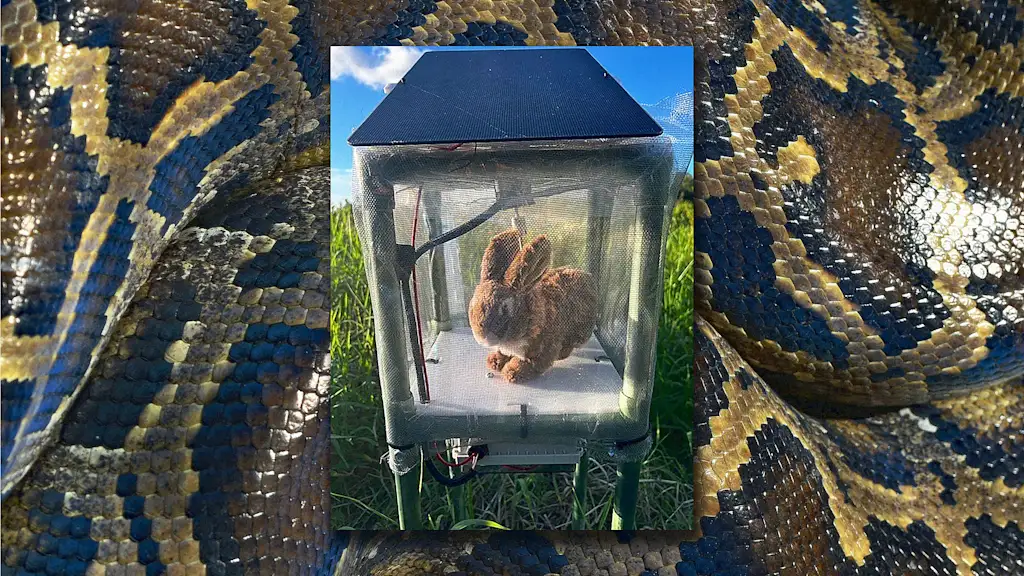
"The robots are simple toy rabbits, but retrofitted to emit heat, a smell, and to make natural movements to appear like any other regular rabbit. "They look like a real rabbit," Kirkland said. They are solar powered and can be switched on and off remotely. They are placed in small pens monitored by a video camera that sends out a signal when a python is nearby. "Then I can deploy one of our many contractors to go out and remove the python," Kirkland said."
"The water district and University of Florida researchers deployed 120 robot rabbits this summer as an experiment. Previously, there was an effort to use live rabbits as snake lures but that became too expensive and time-consuming, Kirkland said. The total cost per robot rabbit is about $4,000, financed by the water district, he added. Pythons are not native to Florida, but have become established in the swampy, subtropical Everglades by escaping from homes or by people releasing them when they become overgrown pets."
Solar-powered robotic rabbits were deployed in the Everglades to lure and detect invasive Burmese pythons that have decimated native wildlife. One hundred twenty toy rabbits were retrofitted to emit heat, scent, and realistic movements, placed in small pens with video monitoring and remote on/off control. When a python approaches, cameras alert crews who can dispatch contractors to remove the snake. The robots cost about $4,000 each. Previous attempts using live rabbits proved too expensive and time-consuming. Burmese pythons are nonnative, reproduce prolifically, and have caused catastrophic declines in small mammals and thousands of birds in Everglades National Park.
Read at Fast Company
Unable to calculate read time
Collection
[
|
...
]